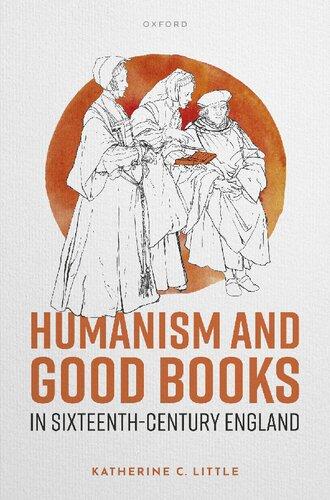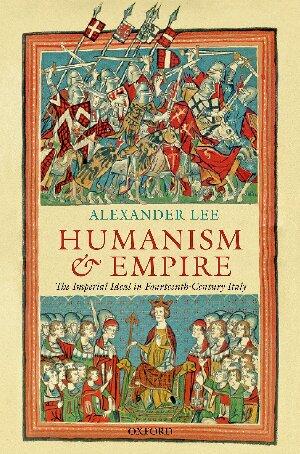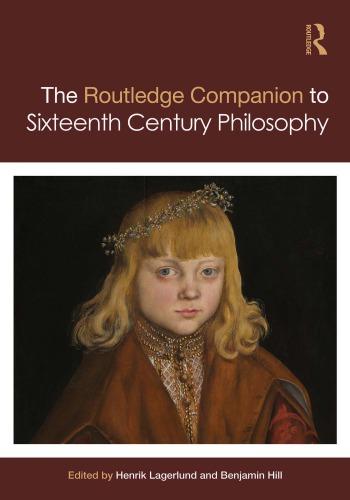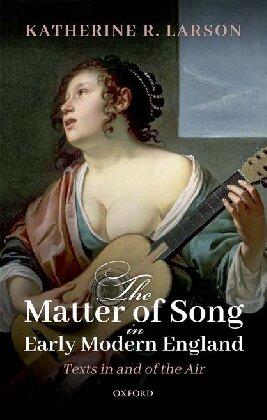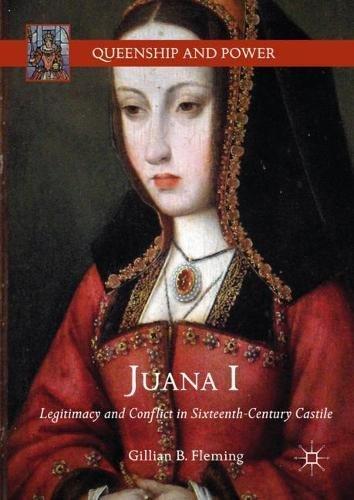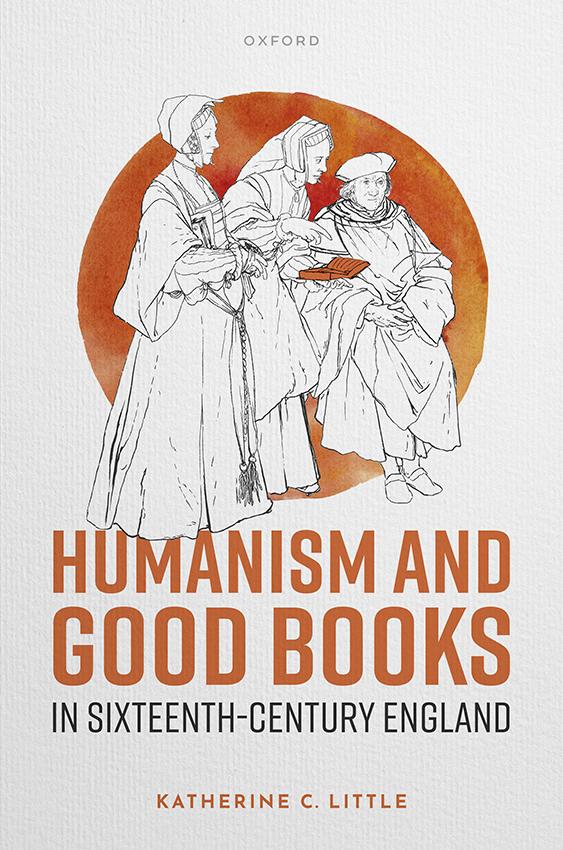Introduction
Reading Is Good for You
Sir Thomas More has long been seen as a herald of novelty, as an origin for the English Renaissance.1 Much of this novelty can be attributed to his humanism—his deep commitment to celebrating, imitating, and reviving the classical legacy, what Francesco Petrarch called the studiahumanitatis.2 More’s humanism is on full display in one of his lesser-known works: a biography of arguably the most influential Italian humanist, Pico della Mirandola, that he translated into English as TheLife ofPico dellaMirandola(1510; 1525).3 More describes Pico as a paradigmatically Renaissance man, anticipating the judgment of later historians: Pico is not only recognized as “chief Orator and Poet,” a phrase that evokes the ancient Roman rhetorician Cicero, but is also praised for his mastery of the classical legacy, his “study in humanity.”4 At the same time, More follows his source in framing Pico’s humanism within a traditional, Christian, penitential trajectory. Pico, who was “an excellent [and] knowledgeable man in all disciplines and virtuous in his living,” ends in “the dark fire of Purgatory,” where his “venial offences are cleansed.”5 Even more interestingly, More locates Pico’s virtue and knowledge, his identifiably Ciceronian ideal, in a mirror.6 In an opening letter to his friend, the nun, Joyce Leigh, More writes, Pico “was to all them that aspire to honor a true spectacle in whose mode of being they might behold, as in a clear, polished mirror, in
what points true honor consists … [his] marvelous knowledge and excellent virtue my rude learning is unable to express sufficiently.”7 The mirror is a familiar figure for a book, one that was used throughout the Middle Ages to encourage readers to reflect on their behavior, to consider whether they have been good or bad according to what they have read. Typical is the use of the mirror by the English poet John Lydgate in his long poem The Fall of Princes (c.1431–38):
Olde exaumples off pryncis that haue fall, Ther remembraunce off newe brouht to mynde, May been a merour to estatis all, How thei in vertu shal remedies fynde Teschewe vices …
[Ancient stories of princes that have fallen, their remembrance newly brought to mind, may be a mirror to all estates, how they shall find remedies in virtue to avoid vices].8
Readers of Lydgate’s poem should use the stories of the princes as guidelines for their future behavior, just as readers of More’s book should model themselves after Pico.
As this brief account should suggest, More’s Life of Pico fuses together, at times rather strangely, what one might call the humanist —excellent, virtuous, and studia humanitatis [study of humanity]— with what one might call the medieval—mirrors, sins, and explicit directives to readers to behold and amend. With this fusion of disparate languages, the text advertises its transitional status; it belongs to both the Middle Ages and the Renaissance. More is certainly aware of the distinctiveness of Pico’s life, even of humanism itself, and yet he does not insist on novelty, preferring instead to insert Pico into a traditional, recognizably medieval, moral frame.
Although Pico’s Life has not played much of a role in literary histories of England, it offers insight into the transition from medieval to Renaissance, or to use a term more recently favored,
the early modern period, whose advent, at least for England, has long been located in the sixteenth century.9 As The Life of Pico should suggest, this transition from medieval to Renaissance was far from abrupt: it consisted of fusions and continuities, of attempts to bridge old and new within the bounds of a single text. Moreover, in its framing, its explicit directions to readers, More’s book reveals not only what made this particular book possible but also what made the transition possible. That is, it approaches writing and reading through a defined mindset, that books should be morally useful. What both Pico, as a model humanist, and the medieval penitential mirror share is the idea that reading books is good for you; it is instructive in virtue and vice or in virtue and excellence; it can shape readers in how to act, think, and feel.10 In other words, Pico’s “study in humanity,” his reading of the classical legacy or of what would now be called literature, is a broad “learning” that includes moral education. That moral education, oriented as it is around the classical legacy, is entirely continuous with other kinds of moral education, such as that found in penitential treatises. Such a perspective is not unique to More, but a vital way of thinking about writing and reading in this transitional period, as will be demonstrated here.
Morality as Cultural Context
To treat morality as a cultural context for reading and writing is to approach it as a set of discourses, with, therefore, all the potential for ambiguity and instability associated with other kinds of discourses, such as literature. Morality is not human behavior itself— there is no such thing as a virtue or a sin empirically speaking—but, rather, ideas about human behavior, whether it is good or bad according to certain guidelines or rules that are themselves rarely homogeneous. Morality cannot therefore be treated as external to a
text, as a kind of identifiable experience that precedes or is distinct from the writing about it.11 In brief, morality is “textueel [bookish]” in exactly the way that Geoffrey Chaucer’s Manciple explains in the late-fourteenth-century Canterbury Tales. At the end of his story about the crow, the Manciple offers a moral lesson, apparently drawn from the biblical book of Proverbs:
Daun Salomon, as wise clerkes seyn, Techeth a man to kepen his tonge weel. But, as I seyde, I am noght textueel
[Lord Solomon, as wise scholars say, teaches a man to hold his tongue. But, as I said, I am not bookish].12
As the word “textueel [bookish]” underlines, morality often appears in terms of rules or “precepts,” that are drawn from a particular text, such as the Book of Proverbs, for the Manciple, or from Aristotle’s Nicomachean Ethics or Cicero’s De Officiis, for many humanists.13 Morality could also be found in imaginative writings, in plays and poetry, such as the Roman comedies of Terence or Virgil’s Aeneid. These are the “good letters of humanity” that the Dutch theologian Erasmus of Rotterdam famously and influentially describes in his writings, claiming in A Complaint of Peace (1517) that they could shape readers in a “faultless” life, because “an education in classical literature makes humans human [bonae litterae reddunt homines].”14 Because it can be found in many different kinds of sources (or books), morality is importantly varied, even as it claims homogeneity or universality, what “a man,” as in all men, should do according to the Manciple.
Morality is also appropriable, even free-floating.15 The Manciple is not a clergyman, and yet he refers to the Bible, claiming for himself some of the authority that goes along with it. Even when morality is associated with a particular institution, such as the school or the church, it is not merely an unproblematic location of ideology, a
simple vector through which the institution attempts to control people. For that reason, moral discourses cannot be reduced to or equated with social, economic, and political forces.16 Moral discourses circulate both within institutions and outside of their control, and they are as interpretable, constructed, and capable of being manipulated as the realm of poetry, bonaelitterae, and prose narratives, the kinds of sixteenth-century texts that have come to be considered literature or literary in the twentieth and twenty-first centuries.17
In addition to, or perhaps, as a result of, its bookishness, the language of morality is also conservative in the true sense of that term: it changes very slowly, accreting and adapting. While new words and concepts are added, and others can and do fade, they are rarely precipitously cut off. People in the twenty-first century, for example, still speak of greed, even though very few of them would describe it in specifically Christian terms, as a violation of God’s commandments, whereby the greedy “do wrong to Jesus Christ.”18
As TheLifeofPicodemonstrates, More describes Pico’s morality, the rightness and wrongness of his behavior, at least in part within the traditional language of sins and purgatory even as he acknowledges the newer language of “excellence.” Morality is, in other words, a context for writing that requires a diachronic approach. There is no clear dividing line, in More’s text or in those of his contemporaries, between one, older, language of good and bad behavior and another, newer one; using morality as a context requires an attunement to particular changes over time.
Accretiveness will be the term used here to refer to this kind of fusion, not only additions, but also occlusions and subtractions, all of which make drawing clear boundaries between medieval and Renaissance difficult. Perhaps the most obvious sign of this accretiveness is that moral discourses defy easy distinctions between secular and religious. Morality is obviously not the same thing as religion, by which one should understand the beliefs people hold and
the practices they engage in. It can (and does) present itself at times as secular in the original sense of the word, as “worldly,” since it deals with human behavior in the world. One can say that lying is wrong, using Aesop’s fable about the boy who cried wolf, without invoking any reference to faith in God or the requirements of faith. The moral of that story, in William Caxton’s translation (1484), makes this potential secularism clear: “For men bileue not lyghtly hym whiche is known for a lyer [Men do not easily believe one who is known to be a liar].”19 Similarly, the sixteenth-century flourishing of interest in moral philosophy, the pagan, classical ethics found in Cicero’s DeOfficiisand Aristotle’s NicomacheanEthics, could be (and has been) read in terms of its secularism, or at least its independence from Christianity. As one of the foremost scholars of humanism, Paul Oskar Kristeller, notes, “the existence of this large body of moral literature written by humanists and popularizers, and of the still larger body of humanist learning and literature, is in itself a significant historical phenomenon. We are confronted with a vast body of secular learning, nourished from ancient sources and contemporary experience and basically independent of, though not entirely unrelated to, the medieval traditions.”20
It would be a mistake to insist too much on the secularism of humanist morality, as Kristeller’s cautious approach to “independence” might suggest. The history of moral discourses is long and at times complicated, but the fact of its accretiveness in both the Middle Ages and the early modern period is also obvious.21 The language of morality, of the rightness and wrongness of human behavior, emerged out of an ongoing conversation between classical and Christian writings. In the penitential tradition, discussions of sin and virtue make use of pagan, classical philosophers, such as Aristotle, together with Christian authorities and the Bible. Chaucer’s late fourteenth-century Parson’s Tale, which is a translation and combination of popular, late medieval penitential manuals, demonstrates this fusion: “After Pride will I speak of the foul sin of
Envy, which is, as by the word of the Philosopher (Aristotle), ‘sorrow of another man’s prosperity’; and according to the word of Saint Augustine, it is ‘Sorrow of other men’s well-being, and joy of other men’s harm.’”22 For Chaucer, as for many authors, there is nothing disjunctive or odd about setting Aristotle and Augustine together in the same sentence.
Such accretiveness is also a hallmark of Renaissance humanism. Even as humanist authors read, imitated, excerpted, and translated more pagan, classical texts than their medieval forebears, they continued to combine, or even conflate, the language of pagan, classical authors, such as Cicero, Plato, and Aristotle, with the language of Christian behavior, drawn from the Bible, penitential traditions, and other kinds of devotional or exegetical writings. Indeed, much of the output of Erasmus of Rotterdam, which is massive by any measure, could be described in terms of such fusion.23 In one of his most popular and influential works, The Education of a Christian Prince (1516), Erasmus explains that children need “to absorb both Christian principles and also literature that is of sound quality [honestas literas] and conducive to the welfare of the state … Such is the power of education, as Plato has written, that a man who has been correctly brought up emerges as a kind of divine creature.”24 For Erasmus, Plato is entirely compatible with “Christian principles,” and pagan, classical literature—here honestasliteras—is both honored for its quality and honorable in and of itself, or virtuous.
In England, during the initial flourishing of humanism in the first part of the sixteenth century, authors were fully aware of the possibilities: fusing pagan and Christian moral languages, adapting medieval texts, and offering new approaches and, at times, new texts. William Baldwin, most famous as one of the authors of the Mirror for Magistrates (1559), re-worked a medieval version of classical moral philosophy, The Dictes and Sayings of the
Philosophers, titling it ATreatiseofMorallPhylosophie(1547).25 The change in title aligns Baldwin’s version more closely with the classical legacy, specifically with Aristotle’s Nicomachean Ethics, which was translated into English and printed in the same year, 1547, as The Ethiques of Aristotle, a guide for “good behavior.”26 In his treatise, Baldwin extends the brief account of paganism that he found in the medieval version, drawing the reader’s attention to the potential contradiction between classical and Christian: “For although (Good Reader) that philosophy is not to be compared with the most holy scriptures, yet is it not utterly to be despised.”27 Even though moral philosophy is not biblical, it is nevertheless useful: “Moral philosophy may well be called that part of god’s law, which gives commandment of outward behavior: which differs from the gospel, in as much as the gospel promises remission of sins, reconciling to God, and the gift of the holy ghost, and of eternal life, for Christs sake.”28 Even as Baldwin distinguishes between classical and Christian, he acknowledges their shared interest in shaping behavior, through commandments and law.
This accretiveness, of classical and Christian, of medieval and humanist, persists across the sixteenth century, linking pre- and post-Reformation moral discourses.29 To be sure, the language of Christian behavior changed, as, for example, penitential manuals, like Chaucer’s Parson’s Tale, faded from view. And yet, the moral language around “the study of humanity,” or what would now be called literature, remained constant, likely because of the tie to educational settings. That is, given the uniform dependence on the classical legacy in grammar schools and universities, there tended to be general agreement about the moral value of classical texts, their ongoing usefulness in teaching about good and bad behavior, however defined.30 Such continuity is evident in the popularity and influence of Erasmus, who stands for the moral value of literature throughout the sixteenth century, across the divide of the
Reformation or Reformations. Erasmus appears at the origin of English, humanist education, praised for his learning and instrumental in writing the book known as Lily’s Latin Grammar, which shaped grammar school education throughout the sixteenth century.31 Later, both Roger Ascham, noted mid-sixteenth-century Protestant tutor, and Thomas Lodge, Elizabethan defender of poetry, invoke Erasmus on the moral benefit of reading classical poetry. In his educational treatise, TheScholemaster(1570), Ascham describes Erasmus as “the honor of learning of all our time,” and therefore an authority for teaching wisdom through study of the classical legacy.32 Similarly, in his “Defense of Poetry, Music, and Stage Plays” (1579), Lodge uses Erasmus to defend poetry for its moral instructiveness: “Erasmus will make that [i.e. poetry] the pathway to knowledge.”33 For Lodge, Erasmian ideas about bonae litterae, the good of classical literature, are still entirely relevant.
Morality and Literary History
With its accretiveness and conservatism, morality suggests an approach to the transition between medieval and early modern, to sixteenth-century literary history, that is as interested in continuities as disruptions, as aware of the fusions as of the novelty informing “the study of humanity,” or humanism. This book offers that literary history, arguing that morality can help explain literary production in this period, not only because moral concerns informed individual texts but also because they helped construct an idea of literature. From this perspective, sixteenth-century texts can be seen as participants in a series of ongoing conversations about what literature, whether classical texts or poetry or even stories, should do to and for readers. These conversations involve past texts and authors, whether classical or medieval, and a wide variety of participants: texts that have come to be seen as canonical as well as
those at the margins, texts that remain much studied today, and those that have been largely neglected by literary critics.
The first part of the book explores the emergence of humanism, the way in which this literary movement intersected with and transformed what had come before. Chapter 1 is in some ways a continuation of the introduction, a survey of the transition between medieval and humanist, in terms of ideas about literature. It reexamines familiar claims for humanist novelty, claims that depend on opposing humanist to medieval: that humanists offered not only a new approach to the classical inheritance but also a new idea of literary value, as, for example, eloquence. By resituating medieval and humanist texts in relation to each other, my chapter shows medieval texts to be more complex in their approach to value, and humanist texts to be less new than is often assumed. The real novelty of humanism is not its attention to literary value per se but its standardization of the certain link between literary and moral value, in the conflation found in the Erasmian term, “good letters [bonaelitterae].”
The humanist interest in morality was not merely theoretical, it also informed their literary experimentations: the new and newly revised genres that appeared in the first part of the sixteenth century. These are the subject of Chapters 2 through 5. Perhaps the most obvious evidence of humanist moral interest is the morality play, and the second chapter takes up the flourishing of this genre in the early part of the sixteenth century. Assigning the morality play to humanism may seem surprising, since these plays are typically understood as medieval. This dating, or rather, mis-dating, has long reinforced the division between medieval and Renaissance literature, in which medieval texts are characterized by their Christian morality and Renaissance texts by their increasing independence or secularism. The great majority of morality plays, including specifically Christian morality plays, belong, however, to the first part of the sixteenth century. These plays thus not only coincide with the
emergence of humanism but also offer insight into it, as I argue, using two cases from the early sixteenth century: the extremely popular play Everyman, which was printed at least four times between c. 1510 and 1535, and MundusetInfans(1522).
To refocus humanism around its moral interests is also to revise our understanding of perhaps its most foundational aspect—the reclaiming of the classical legacy, most typically through some form of imitation. Classical imitation has long been understood as signaling the independence identified by Kristeller, even a kind of proto-secularism. From this perspective, embracing and imitating classical texts, appreciating them on their own terms, would seem to mark out a new space for literature and literary value, one that is free of the Christian moral values that had previously been assigned to these texts. Classical imitation in this period was not, however, as independent as it might appear to be. The humanist desire to fuse classical texts to a largely Christian morality shaped one of the most popular kinds of classical imitation in this period: the Christian Terence tradition. Although now largely forgotten, this tradition was extremely influential during the sixteenth century and central to the humanist educational program. Written first in Latin and then in the vernacular, these plays were ubiquitous in Europe and England, and they show the productive fusion of classical texts within Christian moral frameworks, such as the prodigal son. In the third chapter, I use the popular, Latin, humanist play Acolastus(1529) and its quasiofficial, English translation by John Palsgrave (1540) as a case study for this kind of fusion. Even as the play embraces the goals of Erasmian humanism, in which classical texts teach Christian morals, it also demonstrates an ambivalence about this project. That is, it writes a particularly Christian sense of loss, through the parable of the prodigal son, into its imitatio.
Although humanists presented morality as a stabilizing value for literature, it was, as the example of Acolastus should suggest, problematic. Indeed, that the classical legacy might not match
Christian morality exactly or might even be opposed to it is not a phenomenon unique to Acolastus but one found throughout humanist texts.34 It is typical to view this mismatch or opposition largely positively, as a sign of the independence of literary value for humanists or even, more polemically, by those who embrace Jacob Burckhardt’s idea of the Renaissance, as their casting off of veils, dreams, primitivism, and rigid Christian meanings.35 While there can be no doubt that these mismatches and oppositions were generative, they also carried with them the potential to limit the very values, the good, that these authors claimed to support.
Such limiting appears in one of the most influential humanist texts in England, Sir Thomas Elyot’s Boke of the Governor (1531), the subject of Chapter 4. This text, at first glance, follows the kind of fusion popularized by Erasmus’s Education of a Christian Prince, combining Christian principles and classical literature to educate readers morally and politically, to train them to work for what Erasmus calls “the welfare of the state.” Elyot’s fusion is, on closer look, less an attempt to harmonize the two traditions, and also less an embrace of the independence of the classical legacy, than it is an attempt to limit Christian morality. In his treatise, Elyot uses classical texts and influences ideologically, to contain and disarm familiar Christian virtues, such as charity and patience. Such containment is newly necessary, given Elyot’s immediate historical context: fears about socially radical ideas circulating in the Reformation. By the 1520s, some of the ideas associated with Erasmus—access to scripture, condemnations of pagan tyranny—could (and for some did) look like the kind of egalitarianism or collectivism associated with the Anabaptists, the radical Reformers of the sixteenth century. Elyot limits the Erasmian possibilities: in his treatise classical texts provide an alternative and more oppressive set of guidelines for good and bad behavior.
The destabilizing potential of the humanist project—of that confident link between classical texts and Christian morality—
receives more sustained attention in a mid-sixteenth-century play by John Phillip, ThePlayofPatientGrissell(c. 1558–61), as I discuss in Chapter 5. This play, which also seems to stem from an educational environment, meditates on the new, heightened, moral status of classical texts by returning to a familiar medieval form, the exemplum, and a familiar medieval character, Patient Griselda. In exploring the exemplum as a form, the relationship that form encodes between moral and story, it shows how the humanist project is not only or even primarily a new direction, a freeing of classical texts from Christian language, but, rather, alters both moral discourses, the classical and the Christian.
Phillip’s play, appearing in the middle part of the sixteenth century, is a harbinger that humanist confidence in the moral goodness, even greatness, of literary texts, must and would inevitably fade. And the latter part of the sixteenth century sees the dissipation of humanist confidence, the dissolution of the “graft[ing of] piety onto litterae, that Erasmus made both influential and successful.”
36 As the titles of both Lodge’s “Defense of Poetry, Music, and Stage Plays” and Sir Philip Sidney’s more famous Defense of Poesy [An Apology for Poetry] (1595) should suggest, poetry needed to be defended, its value stabilized, or re-stabilized, on moral grounds, despite and also because of the bold claims made by humanists. Indeed, a retreat from humanism, especially from its morally didactic aspects, is thought to characterize the literature of the Elizabethan period more generally.37 This retreat or backlash has been influentially described by Richard Helgerson in his study The Elizabethan Prodigals. For Helgerson, the flourishing of Elizabethan writing was motivated by a generational conflict, specifically around morality: the authors’ rebelled against the moral advice given by their humanist “fathers” and then repented.
38
And yet, despite their ambivalence about, even rejection of, humanism, late sixteenth-century writers were not in any position to discard the link between literature and morality, to imagine a
literature free of morality. They had inherited a framework, from both the much-admired classical tradition, whether Horace’s dulceet utile or Cicero’s wisdom and eloquence, and their medieval ancestors, such as Geoffrey Chaucer and John Gower, that required them to think about and even defend the morality of their writings. As a result, the emergence of doubt, which characterized the literary production of the generation following the humanists, did not cause these authors to abandon morality, but instead drove them to look for other models, namely by returning to pre-humanist, or medieval, authors and traditions.
Chapters 6–8 explore three of the most prolific authors in the Elizabethan period—George Gascoigne, Robert Greene, and Edmund Spenser—in terms of both doubt in and alternatives to humanism. Each of these authors raises doubts about humanist certainty, the good of the bonae litterae, and imagines a moral model—“worldly vanity”—that can accommodate and contain the potential moral dangers of the classical legacy and of literature more generally. This moral model acknowledges the instability of literature’s moral impact (its moral value) and therefore allows and even encourages the investigation of what humanists have suppressed—that reading might be bad for you. “Worldly vanity” is the pessimistic medieval contemptus munditradition in which all earthly things, including, of course, literature, are a waste of time or harmful. Chapter 6 outlines this Elizabethan trajectory, from humanist confidence, to the dissipation of confidence, and then to “worldly vanity.” It begins with Sir Philip Sidney’s AnApologyfor Poetryas an example of humanist confidence, demonstrating the way in which humanism successfully defined and defended poetry as morally useful at least in part by repressing contradictions between classical texts and Christian morality, the destabilizing potential that inheres in the humanist project. These contradictions had a medieval signature, so to speak, in that they had also preoccupied medieval authors, such as Chaucer. Robert Greene’s treatise VisionWrittenattheInstantofhis
death (1592) demonstrates a fairly typical Elizabethan retreat from humanist confidence and, ultimately, retreat from the idea of bonae litterae or literature itself. It returns to Sidney’s repressed, invoking Chaucer and his Canterbury Tales to call humanist claims for moral usefulness into question, and ultimately, to advocate for turning away from literature (or writing) as a “worldly vanity.”
George Gascoigne and Edmund Spenser also offer versions of this trajectory through doubt and into the solution offered by “worldly vanity.” Chapter 7 takes up two of George Gascoigne’s final works, a moral play The Glasse of Governement (1575) and a devotional treatise, The Droome of Doomesday (1576). Read together, these texts pessimistically abandon humanism and its moral claims. First, Gascoigne re-imagines an influential humanist mode, the Christian Terence tradition, in his play, TheGlasse, emptying out its confident claims for the moral value of classical texts. He then turns to the contemptus mundi tradition, translating Lotario dei Segni’s De Miseria Condicionis Humane (c. 1195) as “The View of Worldly Vanities” in The Droome, countering the humanist emphasis on virtue with a medieval focus on sin. Like Greene, Gascoigne is not convinced that literature uniformly inculcates in virtue, and he ultimately advocates what he describes as a Chaucerian pathway, of turning away from writing.
While both Greene and Gascoigne question the moral value of reading and writing, Spenser’s exploration of moral value is more hopeful, as demonstrated in the eighth and final chapter. In his poetry collection, The Complaints (1591), Spenser uses Chaucer both to critique and to remedy the idea of literature that he has inherited from the humanists. First, he portrays the deleterious effect of humanist imitation, its emotional attachment to the past, and then he imagines literature working morally again, as a Christian social corrective. As is fitting for the most Chaucerian of the Elizabethans, Spenser approaches literary invention as inextricably
tied to moral questions, and this tie inspires him as much as it causes him concern.
Each of the authors discussed in this study, whether categorized as medieval or Renaissance, understood that almost all texts, the great and the trivial, the delightful and the didactic, the solemn and the ribald, raise questions for readers that are recognizably moral: about how they should act in their lives, about what they should do, think, and believe, about whether they agree or disagree with the behaviors reflected in or encouraged by texts. These concerns not only tie the sixteenth century closely to the Middle Ages, they also reach across into our own time.
Notes
1 Sir Thomas More is the important origin for the Renaissance in Stephen Greenblatt, Renaissance Self-Fashioning: From More to Shakespeare (Chicago: University of Chicago Press, 1980), 11–73, and David Norbrook, Poetry and Politics in the EnglishRenaissance (London: Routledge, 1984), 18–31.
2 Petrarch took the term studia humanitatis from Cicero’s Pro Archia, and it is roughly analogous to how the term humanism is being used in this study: the recovery, celebration, and imitation of the classical legacy. See Michael D. Reeve, “Classical Scholarship,” in The Cambridge Companion to Renaissance Humanism, ed. Jill Kraye (Cambridge: Cambridge University Press, 2004), 20–46.
3 On this text, see Robert Cummings, “The Province of Verse: Sir Thomas More’s Twelve Rules of John Picus Earle of Mirandula,” in Elizabethan Translation and Literary Culture, ed. Gabriela Schmidt (Berlin: Walter de Gruyter, 2013), 201–226; and Stanford Lehmberg, “Sir Thomas More’s Life of Pico della Mirandola,” Studies in the Renaissance 3 (1956): 61–74. Lehmberg notes that Pico is a figure of fusion (63).
4 Pico della Mirandola, Here is conteyned the lyfe of Iohan Picus erle of Myrandula a grete lorde of Italy an excellent connynge man in all sciences, and verteous of lyuynge (London, 1525) STC 19898, A4v, image 5. Spelling modernized. For accounts of Pico’s importance to the history of the Renaissance, see Tony Davies, Humanism, 2nd ed. (London: Routledge, 2008), 94–104; Arthur F. Kinney, Humanist Poetics: Thought, Rhetoric, and Fiction in Sixteenth-Century
England (Amherst, MA: University of Massachusetts Press, 1986), 4–6; and Jennifer Summit, “Renaissance Humanism and the Future of the Humanities,” Literature Compass 9.10 (2012): 666.
5 Pico, The Life, first quotation from the title and second from C3r, image 15.
6 On the Ciceronian ideal, see Quentin Skinner, The Foundations of Modern Political Thought, Volume 1: The Renaissance (Cambridge: Cambridge University Press, 1978), 1: 84–94 and Paul Oskar Kristeller, The Classics and Renaissance Thought (Cambridge, MA: Harvard University Press, for Oberlin College, 1955). Kristeller writes, “the combination of eloquence and wisdom” comes from Cicero and “pervades so much Renaissance literature” (Classics and Renaissance Thought, 19).
7 Pico, The Life, A3v, image 4, lightly translated.
8 John Lydgate, The Fall of Princes, 4 vols., ed. Henry Bergen (London: Oxford University Press, 1924–27), Part 1: Bk 2.22–26. For a survey of medieval mirrors that emphasizes the moral and didactic focus, see Herbert Grabes, The Mutable Glass: Mirror-imagery in Titles and Texts of the Middle Ages and English Renaissance, trans. Gordon Collier (Cambridge: Cambridge University Press, 1982), 23–30. A notable contemporary example can be found in the Dutch play, Den Spyeghel der Salicheyt van Elckerlijc [The Mirror of Everyman’s Salvation] (1496; 1501), which is perhaps most well-known as the source for the morality play Everyman (printed c. 1510–25): “Seer uut ghelesen,/ Merct desen spieghel [Very honorable audience/ mark this mirror]” (Elckerlijc, in Everyman andits Dutch Original, Elckerlijc, ed. Clifford Davidson, Martin W. Walsh, and Ton J. Broos [Kalamazoo, MI: Medieval Institute Publications, 2007], lines 871–72).
9 When the Renaissance or early modern period began in England is a fraught question, because texts written in the sixteenth-century cannot be placed in a simple developmental trajectory, and because identifiably “medieval” concerns persisted throughout the period. James Simpson discusses the difficulty of periodizing in The Oxford English Literary History, Volume 2, 1350–1547: Reform andCulturalRevolution (Oxford: Oxford University Press, 2002), e.g., 1–6.
10 The moral aspect of humanism is widely noted, and it is fundamental to humanist education. See, for example, Anthony Grafton and Lisa Jardine, From Humanism to the Humanities: Education and the Liberal Arts in Fifteenth- and Sixteenth-Century Europe (Cambridge, MA: Harvard University Press, 1986), 33, 122–57. At the same time, moral interests tend to be neglected by literary scholars. As Ian Green notes, scholars have tended to “marginalize or offer a narrow account of the ethical dimension of the humanist educational programme” (Humanism and Protestantism in Early Modern English Education [Burlington, VT: Ashgate, 2009], 22). For Jeff Dolven, for example, humanist teaching is a form, a
poetics, and the content of the morality is largely irrelevant (Scenes of Instruction in Renaissance Romance [Chicago: University of Chicago Press, 2007], 1–14). Indeed, much work on humanism is predicated on an opposition between the moral (or didactic) and the literary, a point to which I will return in Chapter 1.
11 Historico-contextualist approaches tend to reinforce a binary between literature, on the one hand, and the world of politics or human experience, on the other, even as they try to see negotiations between these entities. For example, in Renaissance Self-Fashioning, Greenblatt reads Sir Thomas More’s translation of the Life of Pico della Mirandola in terms of More’s own “guilt feelings,” and not in terms of the penitential tradition to which this text so obviously belongs (51). See Christopher Cannon on the difficulty or, perhaps, futility of drawing a boundary between the “experiential knowledge” gained through reading books and that gained through other actions (“Reading Knowledge,” PMLA30.3 [2015], 714).
12 Geoffrey Chaucer, Manciple’s Tale, in The Riverside Chaucer, 3rd ed., ed. Larry Benson (Boston: Houghton Mifflin, 1987), 9.314–16. All references to Chaucer’s works will be to this edition.
13 The sixteenth-century translation of Aristotle’s Ethics uses the term “precepts”: Aristotle, The ethiques of Aristotle, that is to saye, preceptes of good behauoute (London, 1547) STC 754.
14 The first two quotations come from the English translation of Erasmus’s Adagia printed in 1534. See Erasmus, Bellum Erasmi (London, 1534) STC 10449, image 40 [p. 39 r of original). The last one comes from his Querela pacis in Opera Omnia Desiderii Erasmi Roterodami, ed. O. Herding (Amsterdam: North Holland, 1974), 4: 628D; and A Complaint of Peace, ed. A. H. T. Levi, trans. Betty Radice in Collected Works of Erasmus (CWE) 84 vols. (Toronto: University of Toronto Press, 1974–), Vol. 27 (1986): 289–322. In a sixteenth-century English translation, the phrase appears in his discussion of learning as “Good letters make men”: “I wyll conuey my selfe to the companye of eruditie and learnyd men. Good letters make men. But Philosophy more than men. Diuinitie maketh them godes” (The complaint of peace. Wryten in Latyn, by the famous clerke, Erasimus Roterodamus. And nuely translated into Englyshe by Thomas Paynell [London, 1559] STC 10466, B2v; image 11). On the importance of this phrase, bonae litterae, for Erasmus, see Brian Cummings, “Erasmus and the Invention of Literature,” Erasmus Yearbook 33 (2013): 22–54; and Grafton and Jardine, From Humanism, 124–49.
15 See similarly, Chaucer’s description of his Tale ofMelibee:
As thus, though that I telle somwhat moore Of proverbes than ye han herd bifoore
Comprehended in this litel tretys heere, To enforce with th’ effect of my mateere; And though I nat the same wordes seye As ye han herd, yet to yow alle I preye Blameth me nat; for, as in my sentence (Chaucer, Interruption to Tale of Sir Thopas, 7.955–61).
16 Explicitly moral arguments around literature that circulated in the sixteenth century have been influentially read as ideological. See, for example, Catherine Bates, On Not Defending Poetry: Defence and Indefensibility in Sidney’s Defence of Poesy (Oxford: Oxford University Press, 2017); Richard Halpern, The Poetics of Primitive Accumulation: English Renaissance Culture and the Genealogy of Capital (Ithaca, NY: Cornell University Press, 1991); and Robert Matz, Defending Literature in Early Modern England: Renaissance Literary Theory in Social Context (New York: Cambridge University Press, 2000). While morality can certainly express ideology, it would be a mistake to see it as entirely explained by economic and political forces. Readers continue to find books useful for their behavior in ways that also complicate ideology or the status quo. See further discussion in Chapter 1.
17 The history of the literary canon is a history of the different moral and ideological terminology used to describe some of the same texts. See John Guillory, Cultural Capital: The Problem of Literary Canon Formation (Chicago: University of Chicago Press, 1993), ix. See also his survey of the canon debates, 3–82.
18 Chaucer, Parson’s Tale, 10.744.
19 Here begynneth the book of the subtyl historyes and fables of Esope whiche were translated out of Frensshe in to Englysshe by wylliam Caxton at westmynstre in theyere ofoure Lorde M. CCCC. Lxxxiij(London, 1484) STC 175, C2r, image 96.
20 Paul O. Kristeller, “Humanism and Moral Philosophy,” in Renaissance Humanism: Foundations, Forms and Legacy, 3 vols., ed. Albert Rabil, Jr. (Philadelphia: University of Pennsylvania Press, 1988), 3:273.
21 On the relationship between classical and Christian ideas of morality in this period, I have been influenced by the following: Charles F. Briggs, “Moral Philosophy and Wisdom Literature,” in The Oxford History of Classical Reception in English Literature: Volume 1: 800-1558, ed. Rita Copeland (Oxford: Oxford University Press, 2016), 1:299–321; Jennifer Herdt, Putting on Virtue: The Legacy of the Splendid Vices (Chicago: University of Chicago Press, 2008) and “Introduction,” Journal of Medieval and Early Modern Studies 42 (2012): 1–12; Alasdair MacIntyre, After Virtue, 2nd ed. (Notre Dame, IN: University of Notre
Dame, 1984), 165–80; and John Marenbon, Pagans and Philosophers: The Problem of Paganism from Augustine to Leibniz (Princeton, NJ: Princeton University Press, 2015).
22 Chaucer, Parson’s Tale, 10.485.
23 See Grafton and Jardine, From Humanism, 124–49.
24 Erasmus, The Education of a Christian Prince, trans. Neil M. Cheshire and Michael J. Heath in CWE Vol. 27 (1986): 259. Latin quotation taken from Institutio Principis Christiani, in Opera Omnia 4-1: 188.
25 William Baldwin, A treatise of morallphylosophie contaynyng the sayinges of the wyse. Gathered and Englyshed by Wylliam Baldwyn (London, 1547) STC 1253. This book was extremely popular (R. W. Maslen, “William Baldwin and the Tudor Imagination,” in The Oxford Handbook of Tudor Literature, 1485–1603, ed. Mike Pincombe and Cathy Shrank [Oxford: Oxford University Press, 2009], 291–306). On its medievalism, see Curt F. Buehler, “A Survival from the Middle Ages: William Baldwin’s Use of the ‘Dictes and Sayings,’” Speculum 23 (1948): 76–80.
26 Aristotle, The ethiques ofAristotle, F4v, spelling modernized.
27 Baldwin, A treatise, image 5, spelling modernized. In the medieval version, the author only mentions pagans at the beginning: “And in especial by cause of the holsome and swete saynges of the paynems whyche is a glorious fayr myrrour to alle good cristen people to beholde and vnderstonde” (Abu al-Wafa’ Mubashshir ibn Fatik, Here endeth the book named the dictes or sayengis of the philosophres [London, 1477] STC 6826, image 2).
28 Baldwin, Atreatise, image 6.
29 There are those who see the Reformation as an important rupture. See Paul Cefalu, Moral Identity in Early Modern English Literature (Cambridge: Cambridge University Press, 2000) and Brian Cummings, The Literary Culture of the Reformation: Grammar and Grace (Oxford: Oxford University Press, 2002). Without denying these important shifts, one can still acknowledge that rupture has been overstated.
30 Education changed a great deal during the first part of the sixteenth century, but there were important continuities with the late Middle Ages, at least in terms of the value assigned to the classical legacy. See, for example, Nicholas Orme, Education and Society in Medieval and Renaissance England (London: Hambledon Press, 1989), 16–17, and Joan Simon, Education and Society in Tudor England (Cambridge: Cambridge University Press, 1966), 57–60.
31 William Lily, Lily’s Grammar of Latin in English: An Introduction of the Eyght Partes ofSpeche and the Construction ofthe Same, ed. Hedwig Gwosdek (Oxford: Oxford University Press, 2013), 83.

